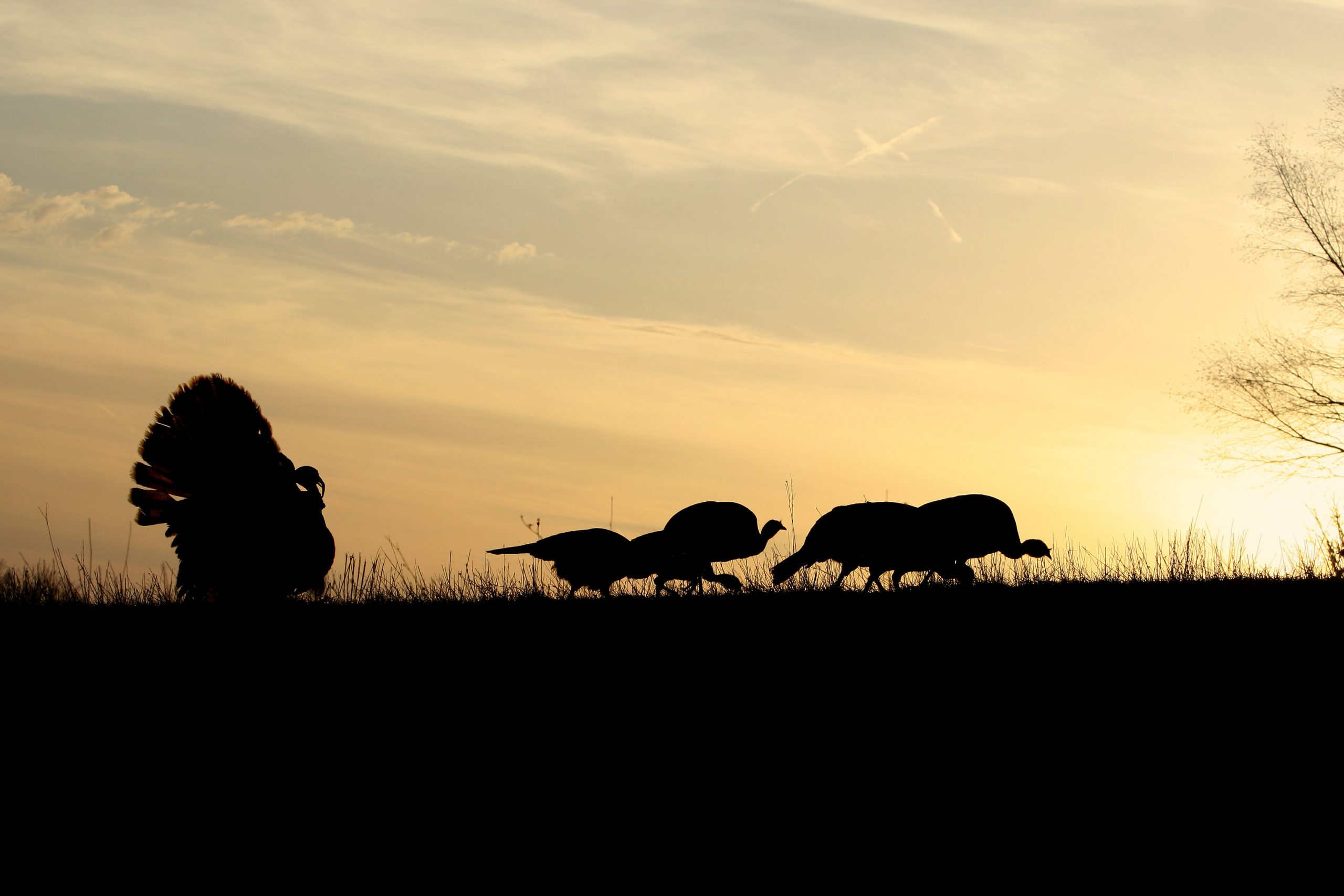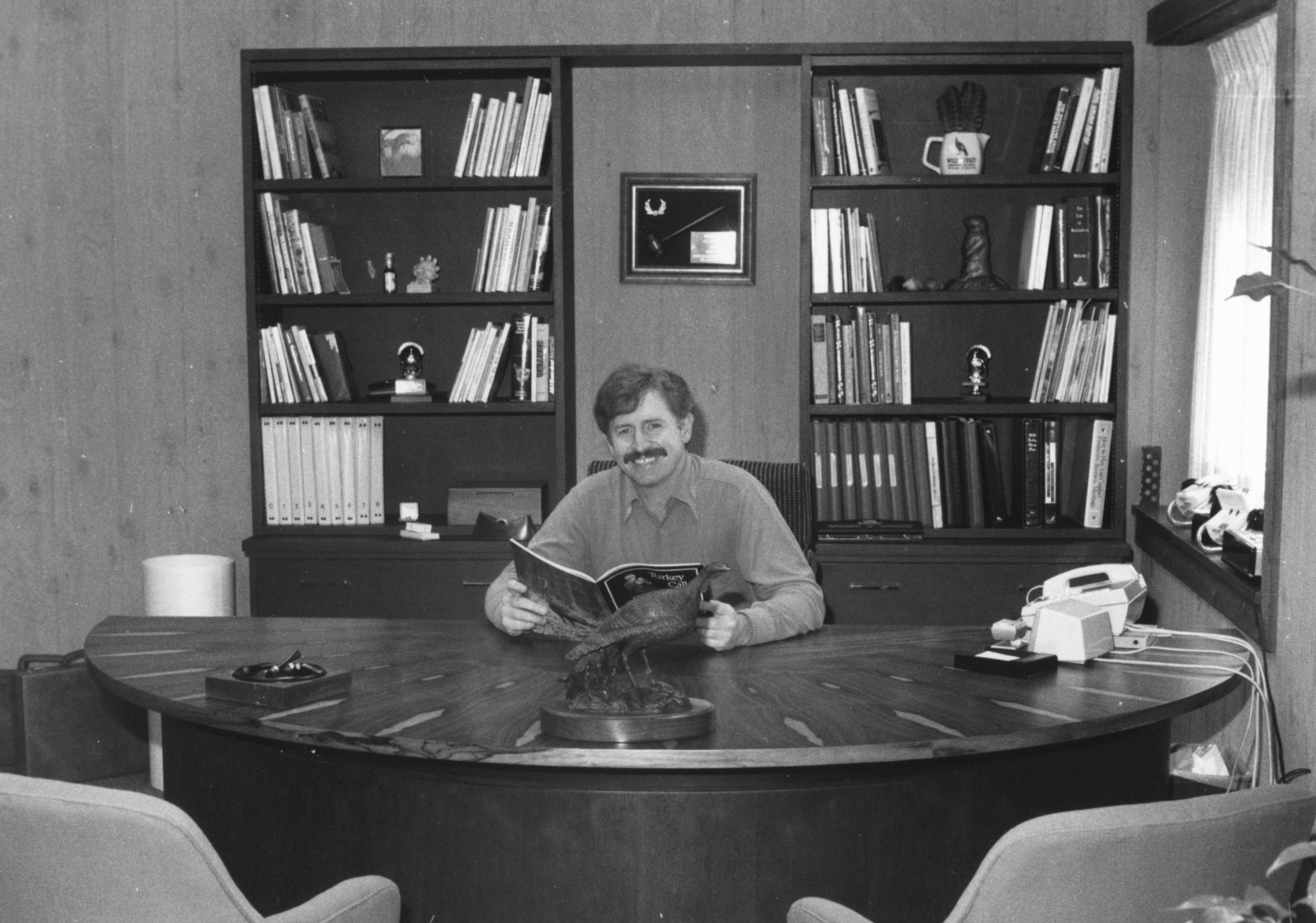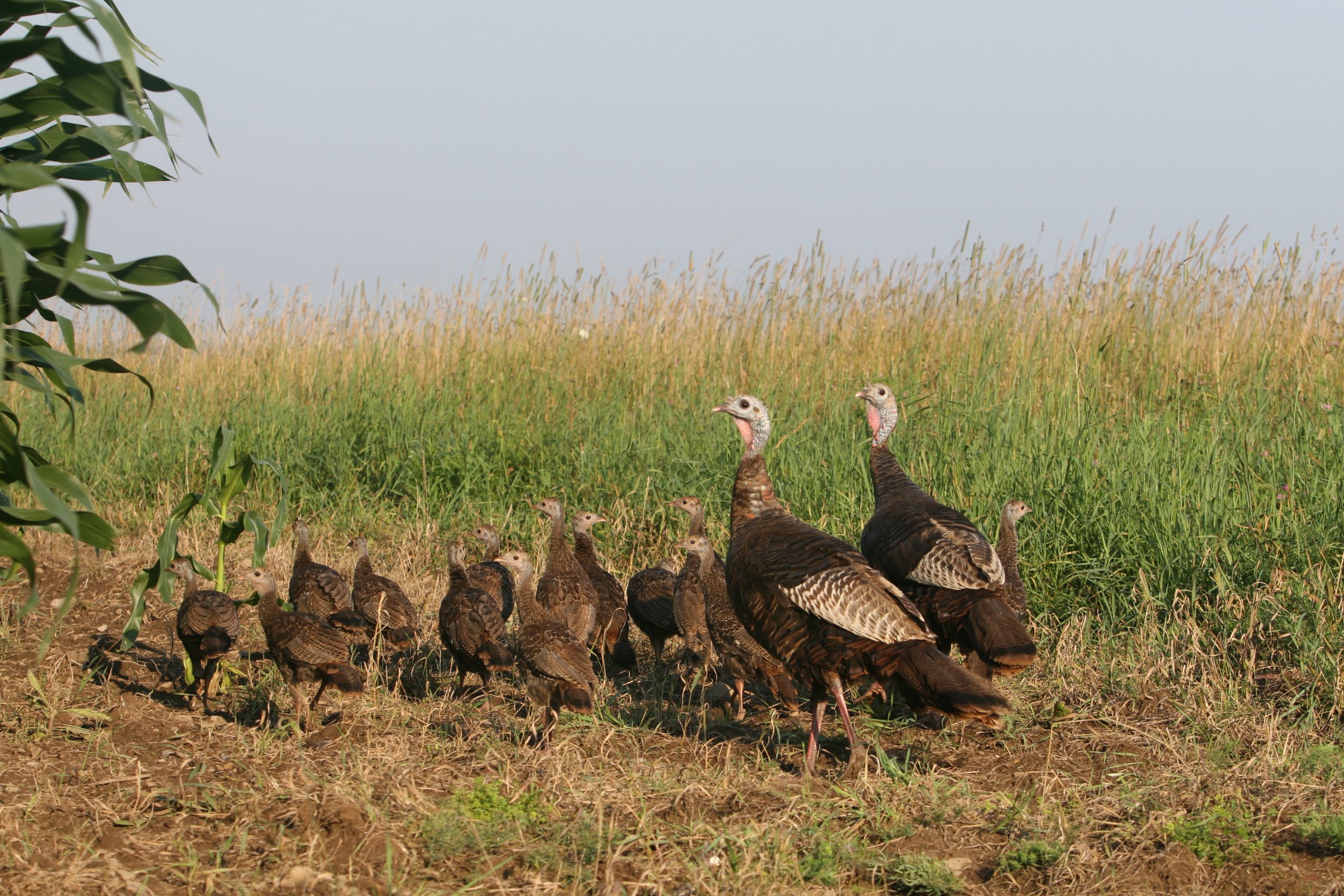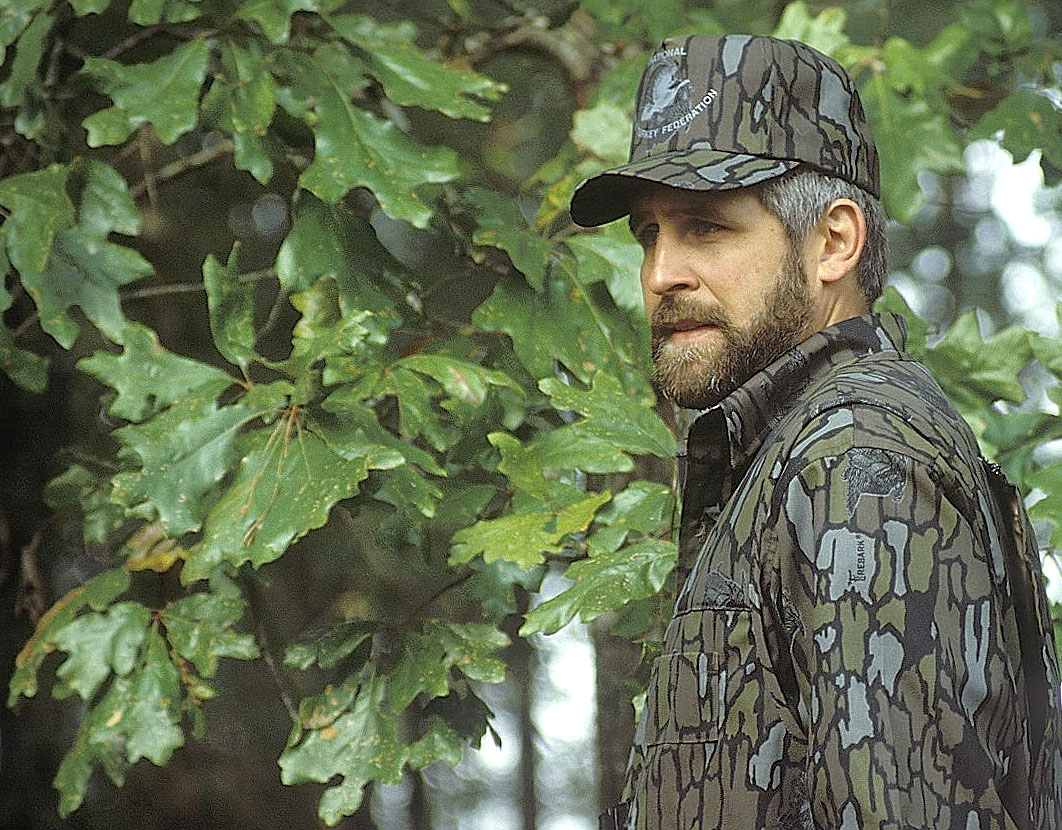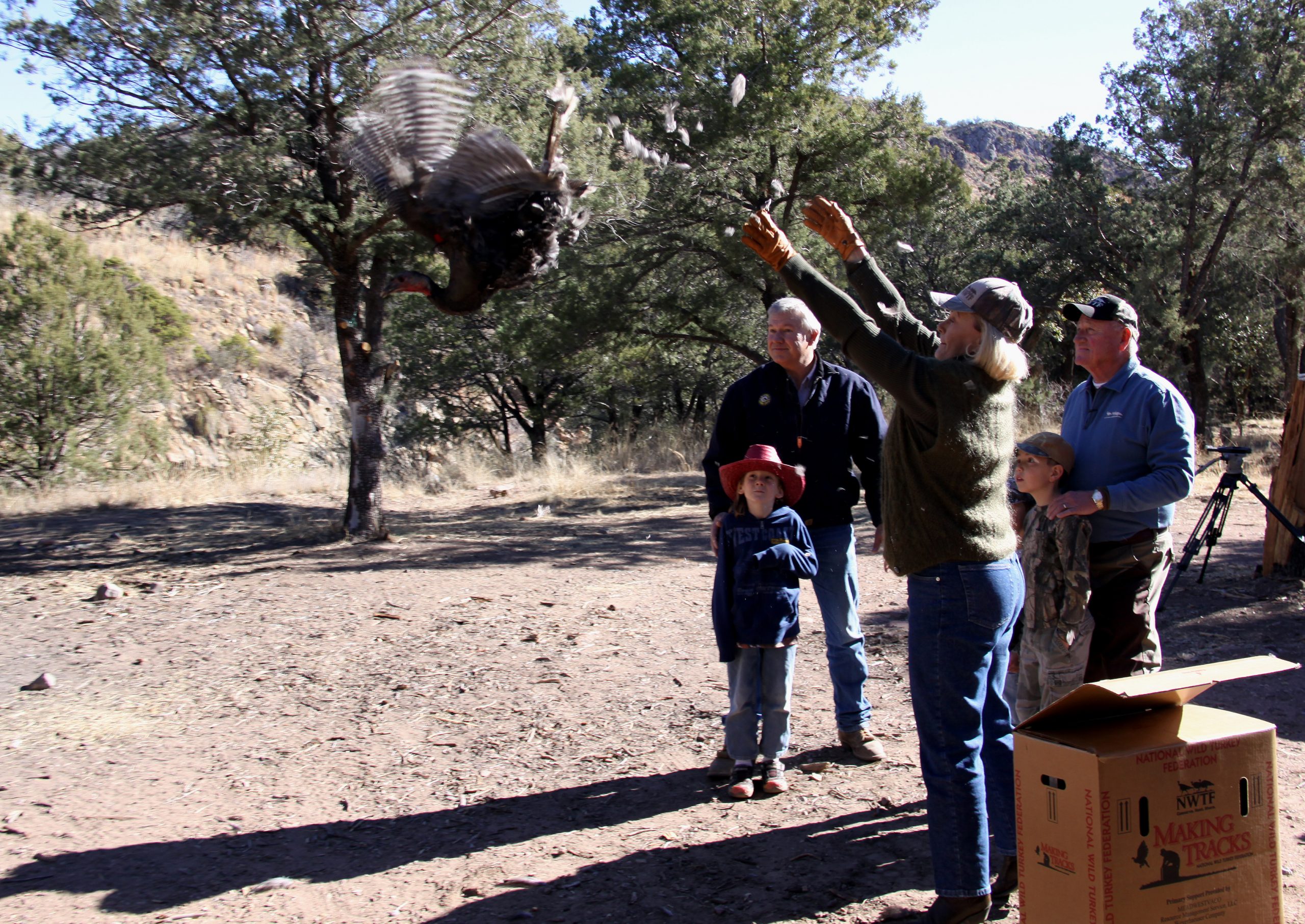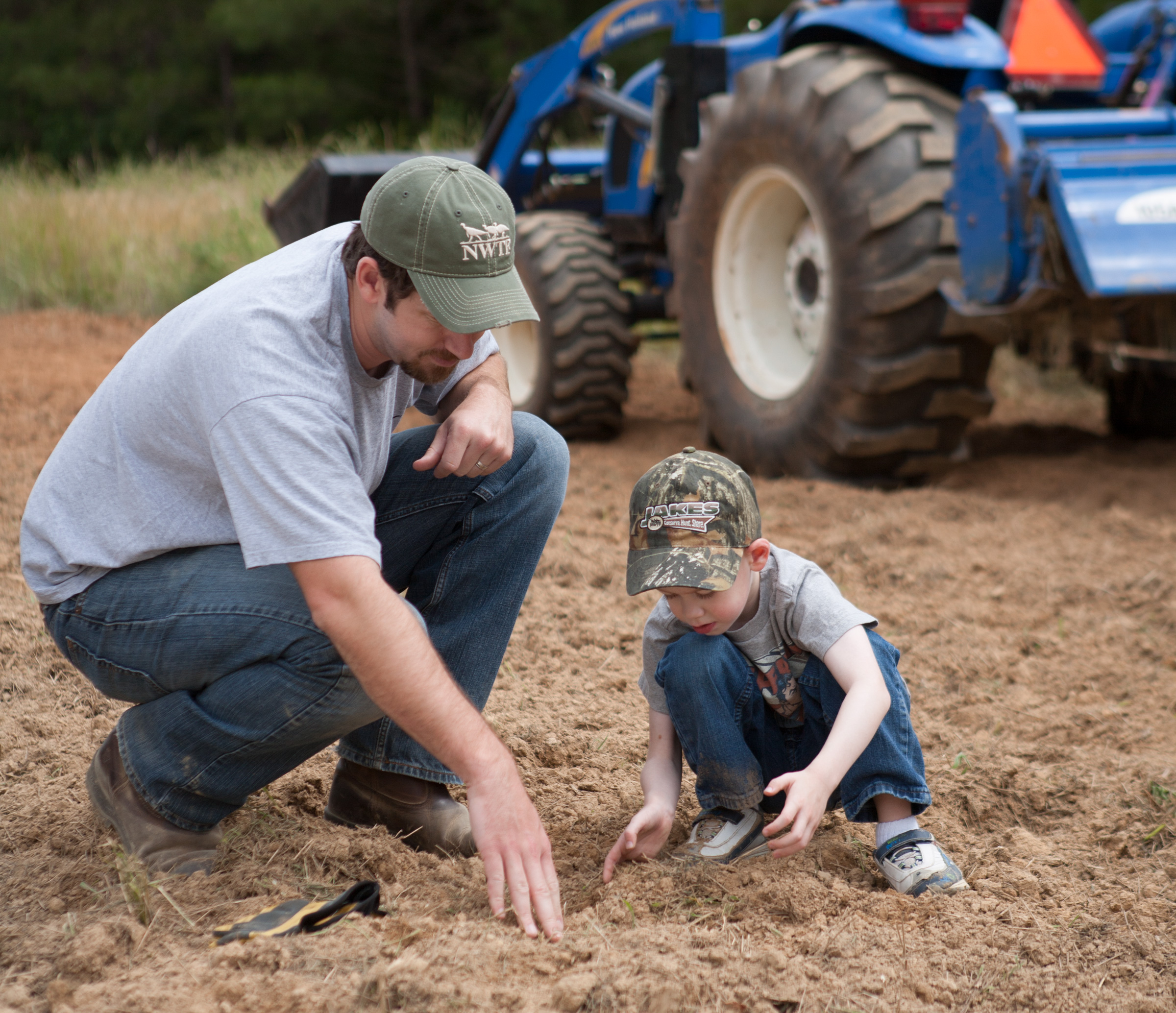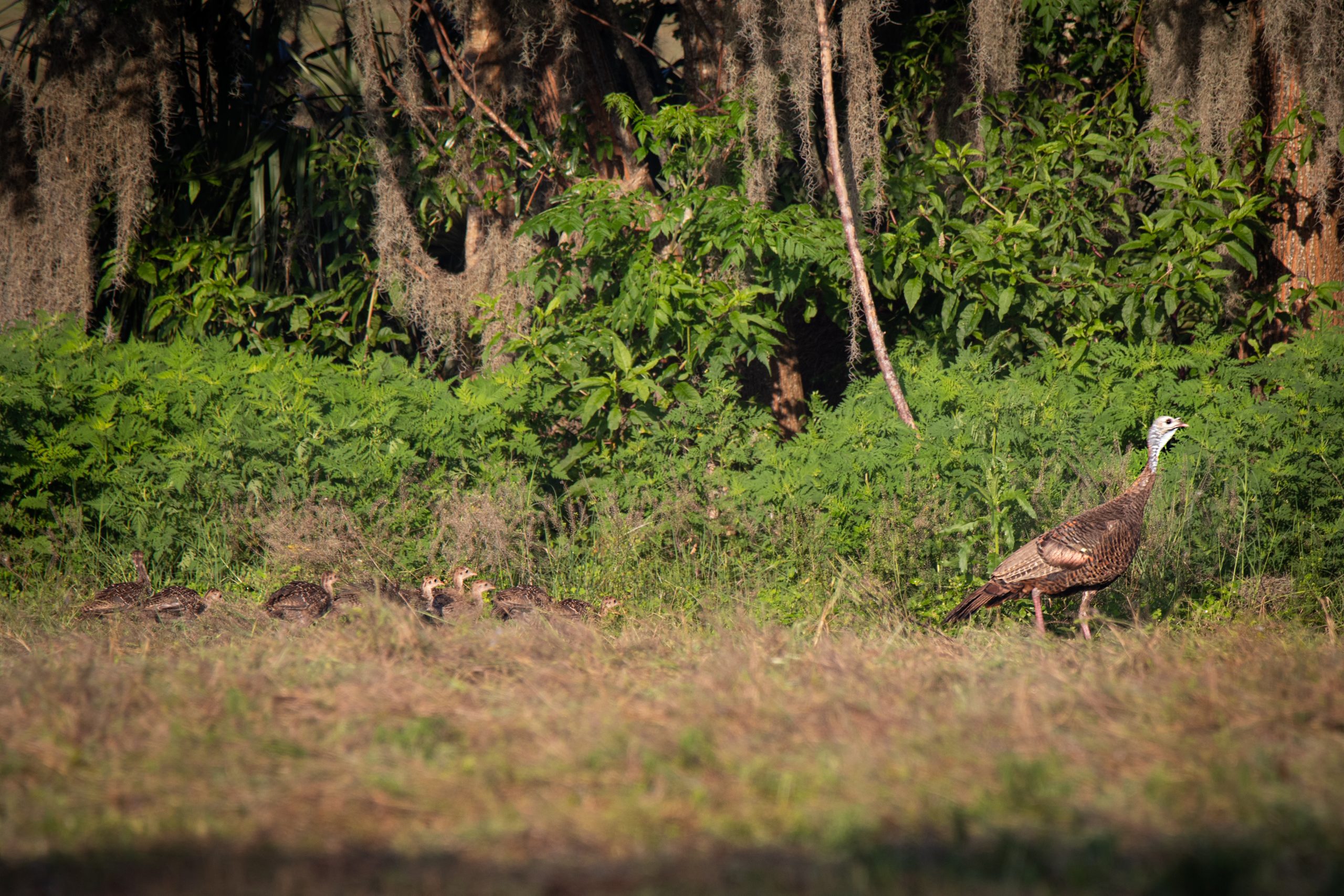Our History
Since 1973 the NWTF has been dedicated to wild turkey conservation and the preservation of our hunting heritage.
The National Wild Turkey Federation is dedicated to the
conservation of the wild turkey
and the preservation of our hunting heritage.
A Timeline in Conservation Impact
In the beginning, the wheels turned slowly, but with the vision of NWTF founder Tom Rodgers and others he recruited to join the fledgling federation, each piece of the puzzle to build a conservation organization solely dedicated to wild turkeys began to take shape. There was a blank canvas to begin, and several important characters contributed to the creation of a conservation masterpiece throughout the years: 1.3 million wild turkeys in 1973 has turned into more than 6 million birds five decades later. The impact of our NWTF forefathers cannot be overstated, and the foundation they built has led us to a new era of wild turkey conservation and innovation. How we respond as caretakers of the resource in the NWTF’s 50th anniversary year and beyond will determine how we will be remembered in another half century.
Era of Inception
1960s: In the 1960s, sufficient research showed increases in human population and related development were threatening the wild turkey’s habitat in many areas of the United States, especially along the eastern seaboard.
1972: An insurance salesman and syndicated newspaper outdoor writer Tom Rodgers wasn’t willing to stand by while wild turkey hunting habitat was being destroyed. He envisioned a national organization dedicated to restoring wild turkey populations.
- He traveled between business deals and listened closely to those who shared similar values. Rodgers discussed his idea with several well-respected state agency wild turkey research biologists and gained support.
- Returning home from one of many trips in 1972, Rodgers stopped in rural Edgefield, South Carolina, host that year of the South Carolina State Wild Turkey Calling Championships. For the first time, he liked what he heard.
- Rodgers pushed forward and conceived the title “The National Wild Turkey Federation” in 1972.
1973: Rodgers chartered the organization in Fredericksburg, Virginia, on March 28, 1973, as a research and conservation education organization. The NWTF assisted with sponsorship of the first Eastern U. S. Open Turkey Calling Contest in Elkins, West Virginia.
- Rodgers moved the NWTF to South Carolina. He noted that the move consisted of a cigar box “stuffed with membership cards.”
- Launched Turkey Call magazine to communicate with members.
- Dave Harbour, a renowned outdoor writer, and field editor of Sports Afield magazine became the NWTF’s first life member ($250) and later established the World Gobbler Records by devising a scoring and ranking system still in effect as the NWTF Wild Turkey Records program.
- Pennsylvania had a tremendous influence in the state with the highest number of turkey hunters in the U.S.; Pittsburgh Press outdoor writer Dr. Roger Latham also lent his voice in support of the NWTF.
1974: South Carolina is the first state chapter established followed by Georgia and Kentucky. David Hale, a farmer from Kentucky who started Knight and Hale game calls, would serve as president of the Kentucky state chapter.
1975: Technical committee is established that would consist of wild turkey biologists who provide recommendations for research, management, restoration and educational programs.
1976: The NWTF was bolstered by 18 state chapters. And, the NWTF Stamp Print Program began, one of the first successful fundraising efforts.
1977: First NWTF convention was held in Hershey, Pennsylvania, with 2,000-plus in attendance. This is where the first Grand National Calling Championships were held. The NWTF also received its first research grant from the USDA Forest Service.
“Those of us who have had the opportunity to see an old tom in full strut will probably never be quite the same again. We are fanatical in our feelings for this king of game birds, and we know it is up to our efforts to safeguard the turkey’s future.”
Vernon Bevill, Former NWTF National Board Member
Restoration Era
1978: Rob Keck reported to work on Feb. 1 as director of Chapter Development.
1980: Groundbreaking for the Wild Turkey Research Center in Edgefield, South Carolina, took place. With the hiring of wild turkey researcher James Earl Kennamer, Ph.D., from Auburn University, the NWTF entered a new era of wild turkey management.
1981: Keck is named executive vice president, and the Juniors Acquiring Knowledge, Ethics and Sportsmanship (JAKES) program is established. The program is dedicated to informing, educating and involving North America’s youth in hunting, wildlife conservation and the wise stewardship of our natural resources.
1982: 150 state and local chapters were established.
1983: The NWTF’s first fundraising banquet was held at the Peachtree World of Tennis in Norcross, Georgia. More than 250 attended and $20,000 was raised.
“When I started, there were 30 states that had turkey season, and it was really a situation where, for over a century, many states were without turkeys. In those early days, we put the focus on turkeys and turkey restoration. We had great ideas but no money. It was clear then we had to find a way to fund restoration and on-the-ground projects. We focused on how we could do greater things together.”
Rob Keck, Former NWTF CEO
1985: The Wild Turkey Super Fund program is established for funding conservation, habitat restoration and education projects.
1986: NWTF Executive Vice President Rob Keck, NWTF Director of Research and Management James Earl Kennamer, Ph.D., and USDA Forest Service Chief R. Max Peterson signed a Memorandum of Understanding for the benefit of wild turkeys. Under the agreement, the NWTF would provide money and volunteers to aid the Forest Service in maintaining and improving wild turkey habitat and conducting research on the national forest system lands.
1987: Target 2000, a national wild turkey restocking plan, is launched with the trap and transfer of birds from Thomson, Georgia, to Tyler, Texas.
1992: The 1,000th state project was funded by the Wild Turkey Super Fund program.
1995: First Turkey Shoot is held — Largest sporting clay event raises funds for conservation and hunting heritage. NWTF membership surpasses 100,000 members.
- During the 19th NWTF Convention and Sport Show in Nashville, Tennessee, honorary convention chairman John L. Morris, founder and owner of Bass Pro Shops, stood on stage with his close friend and country music legend Porter Wagoner and pledged $100,000 to support the JAKES program in Wagoner’s name.
1997: The first NWTF website went live www.nwtf.org.
1998: Women in the Outdoors program is established with a mission dedicated to providing interactive educational outdoor opportunities for women, the conservation of the wild turkey, and the preservation of our hunting tradition.
- The Winchester Museum, the only museum in the world dedicated to the history and conservation of the wild turkey, opened at the NWTF headquarters.
1999: Wild Turkey Super Fund spending tops $100 million.
- Turkey Call TV became a top-rated hunting show.
- JAKES Magazine
2000: Wheelin’ Sportsmen program begins as the NWTF recognizes the need to help people with disabilities enjoy the outdoors and have opportunities to participate in hunting and shooting sports.
Post-Restoration Era
2003: The NWTF’s scholarship program tops $1 million given to high school seniors.
2005: The NWTF joins the Families Afield initiative to allow new hunters to purchase apprentice licenses.
2008: The North American Wild Turkey management plan was adopted.
- George Thornton is named the new CEO.
2009: Turkey Country magazine launched.
2011: The 200,000th wild turkey is trapped and transferred in Arizona.
- JAKES Take Aim program launches to introduce youth to shooting sports.
2012: Save the Habitat. Save the Hunt. initiative begins a charge that mobilizes science, fundraising and devoted volunteers to conserve or enhance more than 4 million acres of essential wildlife habitat, to recruit at least 1.5 million hunters, and to open access to 500,000 acres for hunting.
2014: The NWTF joined forces with the Council to Advance Hunting and the Shooting Sports and launched Recruiting, Retention and Reactivation efforts.
- The NWTF was the first nongovernmental organization to bring state and federal wildlife agencies together with our volunteer base and evaluate R3 efforts.
2015: Introduction of America’s Big Six — the NWTF identified dozens of areas that required immediate conservation needs. These regions across the U.S. are predominantly where the NWTF has used its resources in conserving and enhancing wildlife habitat for the wild turkey and an array of other species.
2016: The NWTF opens the Palmetto Shooting Complex.
2017: Becky Humphries appointed as the fourth CEO in NWTF history.
2019: The NWTF and the USDA Forest Service partner on a national forest restoration initiative called the Rocky Mountain Restoration Initiative.
- The National Forestry Initiative is signed. The NWTF and the USDA Natural Resources Conservation Service are working together to help improve forest health and forest ecosystems on private lands and manage the forestry-related workload derived from the farm bill.
- The NWTF and its public policy team advocated for new legislation to provide an update to the Pittman-Robertson Act, which has helped fund conservation work through an excise tax. The president signed the Pittman-Robertson Modernization Act in 2019 which allows natural resources agencies to use these funds to recruit, retain and reactivate hunters and recreational shooters.
2020: The NWTF surpasses its Save the Habitat. Save the Hunt. initiative goals two years ahead of schedule. From August 2012 to August 2020, the NWTF conserved or enhanced 4,007,920 acres of wildlife habitat, recruited 1,530,162 new or lapsed hunters and opened 667,772 acres to hunting.
- The NWTF launched the Call for All campaign as a result of traditional banquets being canceled due to the pandemic. In total, $7.3 million in cash was raised in less than 60 days.
“I think this organization, more than any other, has built its mission and its vision on hope. It’s an organization that sees. It saw a country full of wild turkeys when we didn’t have wild turkeys but in a few areas, and it made it happen. And, this organization saw a country of new hunters coming on board and joining us. And, they saw a vision of well-managed forests to benefit a variety of wildlife, and they saw open public access for people to go out and use and enjoy, and they invested in it.”
Becky Humphries, Former NWTF CEO
The Innovation Era
2021: The NWTF rebrands its look and feel, including new logos, a new-look Turkey Call magazine and a new tagline, “Healthy Habitats. Healthy Harvests.”
2022: Jason Burckhalter and Kurt Dyroff were named co-CEOs of the NWTF.
- The USDA Forest Service and the NWTF sign a 20-year national master stewardship agreement that includes an initial $50 million investment to dramatically increase the scale of conservation work nationwide.
2023: The NWTF rolls out six vital goals for its 50th anniversary, a collection of critically important milestones to accomplish in one year for the future of wild turkeys, our hunting heritage and the organization’s future. These goals included, but are not limited to, positively impacting 1 million acres of critical wildlife habitat, raising $500,000 for wild turkey research, dedicating $1 million to education and outreach programs, growing memberships to 250,000 and raising $5 million toward an overall $50 million endowment fund.
- The NWTF also made it’s largest single-year investment in wild turkey research through its request for proposals program and launched the Habitat for the Hatch initiative aimed at establishing a million acres of critical nesting and brood habitat in the Southeast to bolster wild turkey populations.
2024: Fiscal year 2024 was marked by exceptional financial growth and heightened mission delivery from all aspects of the NWTF — increasingly healthy ecosystems across the country, sharing the life-changing power of the outdoors with others, building support for our hunting heritage, working with legislators to pass/oppose critical legislation and so much more. Thanks to our volunteers, staff, partners and members, we have raised the bar yet again this year.
- Vision Statement — “A nation united by the life-changing power of the outdoors.” Our vision unites us as a federation while also opening the door and welcoming others who share our love and passion for our nation’s natural treasures.
- New Endeavors — This past fiscal year also saw the NWTF step into completely new territory for the wild turkey, establishing the first-ever endowed wild turkey professorship. The NWTF and the University of Georgia solidified a first-of-its-kind professorship at UGA’s Warnell School of Forestry and Natural Resources. Renowned wild turkey researcher Dr. Mike Chamberlain will be the first to chair this position.
- Research — Fiscal year 2023-24 marked the largest single-year investment in wild turkey research in the history of the NWTF – a $655,447 contribution from our national headquarters through the NWTF Research Request for Proposals program.
- Habitat Initiatives — In August, the NWTF announced the kickoff of the Forests and Flocks Initiative, a Northeastern conservation initiative that will create 100,000 acres of improved wild turkey habitat.
- Impact — In FY24 alone, the NWTF positively impacted 894,747 acres of wildlife habitat, and we couldn’t have done it without every member of the flock. In addition, for every dollar received, 90 cents went to mission-related work.
2025: For more than 50 years, the NWTF has been the only organization whose mission focuses on both conservation and hunting. The NWTF has just begun to execute a comprehensive 10-year strategic plan that touches every aspect of the organization.
Goals include:
- Doubling the size of the organization in both membership and chapters while also focusing on attracting and retaining quality talent.
- Continuing to build out additional large-scale, NWTF-led initiatives covering the remaining balance of the country.
- Explore additional ways the NWTF can create endowed professorships and dedicated funding streams for wild turkey programs in academia, ensuring that there will always be educational pathways creating the next wild turkey biologist, professional, or even professor.
“We look forward to building upon the NWTF’s nearly 50 years of success. The future is bright and reminds us how the NWTF achieved it: our mission and people. The NWTF will increase focus on out membership and member experience and bolster research and habitat delivery in areas experiencing wild turkey population decline. Our mission, as ever, is to ensure robust wild turkey populations while benefiting healthy forests, waterways and communities, and championing the soul of the American hunting lifestyle. This requires a nimble organization, built on a solid financial foundation, capable of retaining and attracting the best and brightest minds.”
Jason Burckhalter and Kurt Dyroff, NWTF Co-CEOs
Your Support Makes a Difference.
